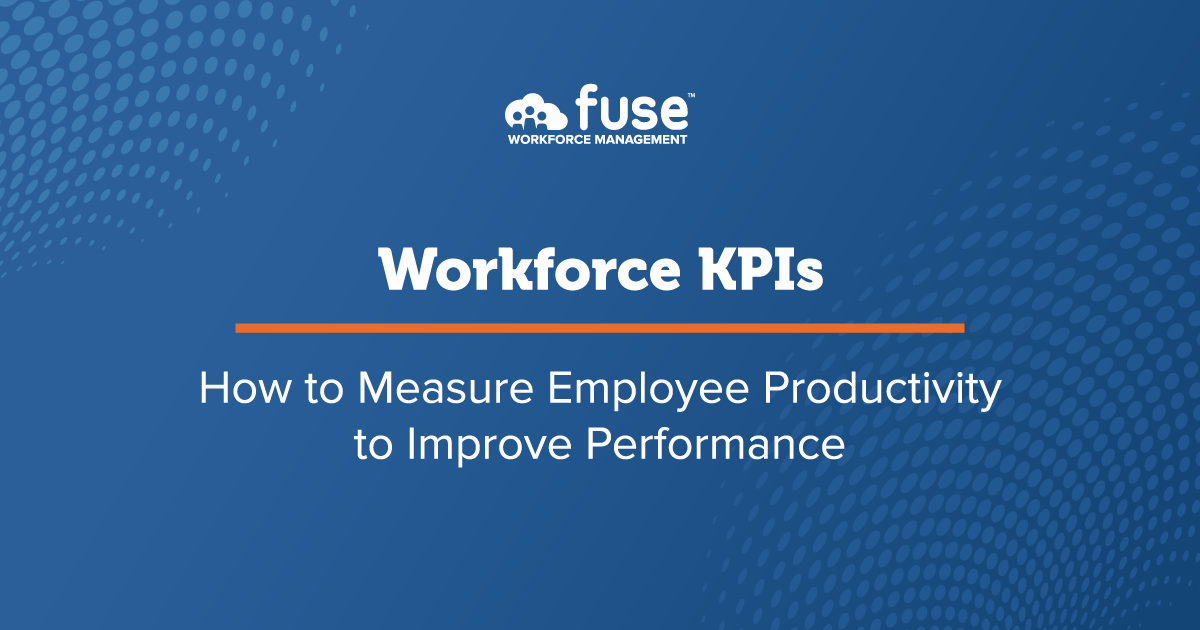No matter the size of your organization, one metric you can't shake free of is worker productivity. Whether you're an entrepreneur in a single-person office or an HR director in a company with thousands of employees, your day-to-day is ruled by metrics that help you get a sense of how productive your people are and whether they're meeting their goals. How can you measure employee productivity effectively?
The Importance of Understanding Employee Productivity
Employee productivity is an area of great concern for most companies. Productivity is considered a key metric for an organization, and often HR is heavily involved in the tracking process. Productivity metrics measure an employee’s output, including time spent and goals met. Productivity is one aspect of performance management. These are often used in concert with performance assessments, which provide insight into how well each team member contributes to the company's success.
Employee productivity metrics provide valuable insights into how employees spend their time and give managers visibility into how their teams perform. Understanding productivity allows managers to make informed decisions about how best to allocate resources. The data can also help managers identify potential problems before the problems become serious enough to cause significant damage to the organization. Finally, having this information helps managers identify opportunities for improvement, like reducing workplace distractions or providing additional support.

Two Ways to Measure Employee Productivity
Productivity metrics are a way to measure how much value a worker creates over a specific time period. These metrics are typically used to track employee progress toward goals and to measure the amount of output they produce.
Classic Timesheet Tracking
One of the most obvious ways to measure the quantity of time spent on day-to-day tasks is by using employee time sheets. Modern time sheets go far beyond “clock in, clock out.” They can provide granular task detail and reflect the different roles someone's serving during work hours.
For example, a construction company may have different employee roles, like roofers, sheet rockers, and framers. Each job may have a different compensation structure, which is typically siloed. However, say you have one employee who does both sheetrock and roofing. In that timesheet, she keeps track of what she does during different portions of the day. Her timesheet would reflect that she did two hours of sheetrock and six hours of roofing one day and only sheetrock another day.
Modern time tracking software can automatically manage scenarios like these, which would have been frustrating to work out manually, especially at a large scale.
Fuse Workforce's time tracking tool comes with several standard time reports that keep track of time, show who's clocking in and out, who's on, who's not on, who's doing which job today, and other day-to-day attendance information. Reports can be configured to include other collected data to measure whatever is important to your company.
Goal Achievement Tracking
Goal setting is another way to track employee productivity. In most companies, goals are set for the firm, departments, teams, and individuals. The nature of the goals will vary widely, of course, so it’s beneficial to have software that helps keep track of everything.
A goal development tool enables employees, managers, and human resources to set, see, and track goals throughout the year. At the end of the year, an employee can clearly see the goal given to them and whether they accomplished it in the allotted time.
This measurement focuses on what the employee has accomplished during the time they've been working, rather than what they've done to fill every moment. A complete picture of an employee's performance quality can be achieved by combining day-to-day productivity with goal achievement data and Fuse's comprehensive training and performance development tools. This information is vital for conducting performance reviews.
Using Fuse Workforce to Report Performance Data
Fuse Workforce can help organize performance data into dashboards that can deliver the most important information to the right people at a glance. Real-time performance data can be displayed in detailed spreadsheets or visually with graphs and charts. A configurable dashboard can include this content, so it's easy for managers to access, understand, and present to employees or leadership.
Time and goal tracking data can be displayed on the same dashboard visually, where it's easy for an employee or their manager to find. Data can be compared to draw conclusions about employee productivity, including whether teams and employees have what they need to meet the goals set for them. If goals are unmet, managers can investigate if the employee needs more training, equipment, or support – or if the goal itself is unrealistic. If the employee is meeting goals quickly, a manager may want to check the work quality, and if it's meeting expectations, perhaps find work for the employee that's more appropriately challenging for them.

Using Productivity Metrics to Improve Work Performance
It's worthwhile evaluating these metrics carefully and regularly. As noted, they can indicate many issues that may need to be managed. However, course corrections can be made that can improve not only the productivity of an individual worker but company productivity as a whole. Performance metrics can help leaders and managers discover and solve issues before problems get too large to manage efficiently.
We can see this in action if we think of our contractors working on a project. Looking at the day-to-day timesheet data, a manager sees everyone working steadily. However, progress on goals is slower than expected. Upon investigation, the manager could learn that the project scope has shifted, employees encountered problems, or that the team isn't big enough or needs access to more equipment.
The manager can now choose a course of action to increase overall productivity by allocating resources to meet the need, whether it’s with a rented lift or two more sheetrockers. The company is more likely to complete the job when expected, preventing delays and frustrated customers. Workers are more likely to feel supported and will keep working for the company, reducing expensive staff turnover.
When appropriately used, productivity data is a powerful indicator of a company's overall work landscape. Managers and employees using these metrics usually experience improved work quality and productivity. When employees are productive, happy, and satisfied, they deliver.

